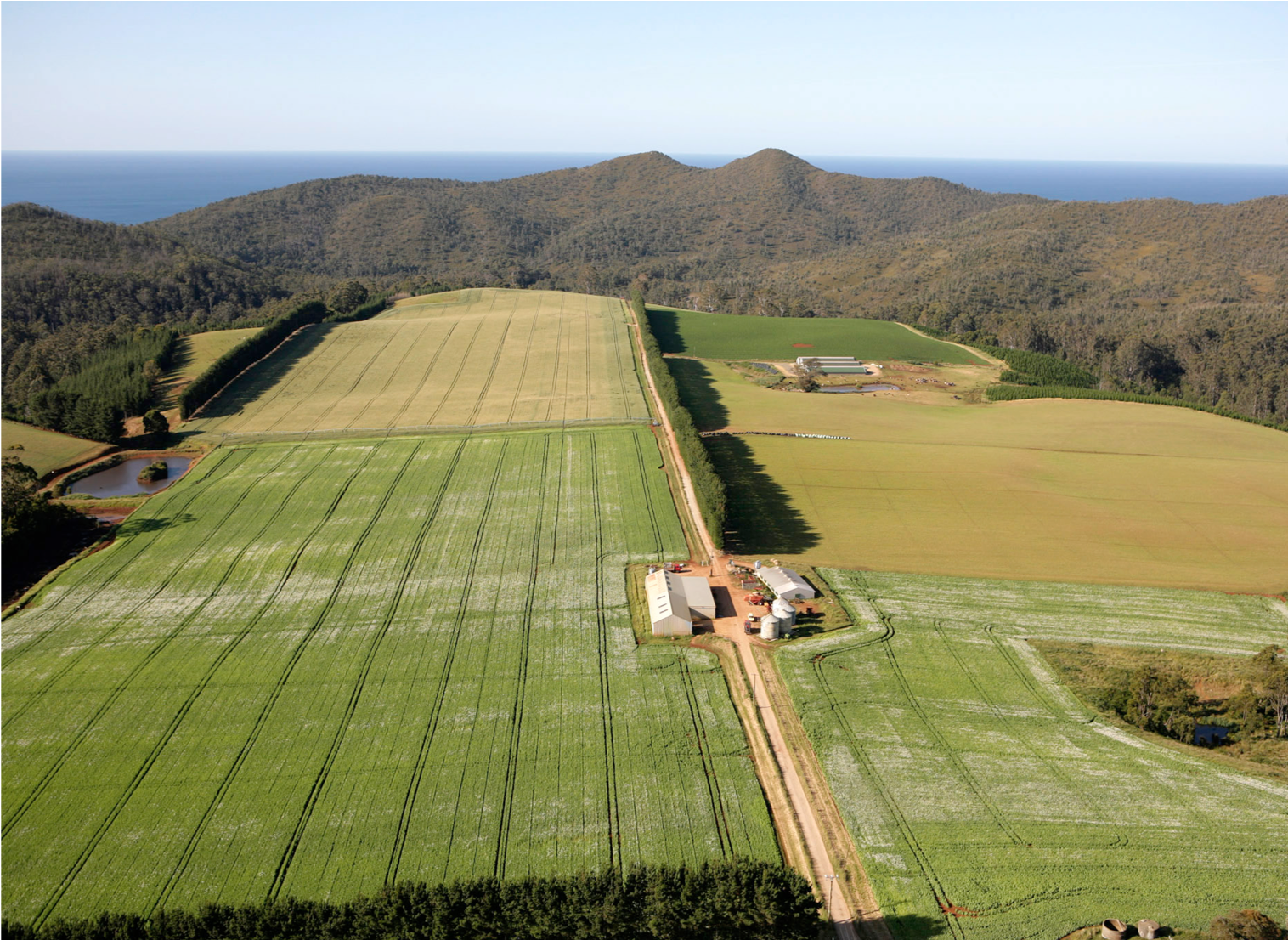Looking to the future of agri practices
Wynyard producer Michael Nichols cultivates quite the diverse crop.
Based in Sister’s Creek, nearly 200kms northwest of Launceston, Redbank Farm rotates potatoes, onions, carrots, processing peas, buckwheat, pyrethrum, poppies, mustard, wheat, canola, beef steers and plantation radiate pine saw logs.
And to keep atop of his crops, he employs a mixture of state-of-the-art agri practices including grid soil sampling, satellite NDVI imagery and yield mapping to ensure maximum sustainable output and soil regeneration.

Aerial view of Redbank Farm, Sister’s Creek.
‘The grid soil sampling and testing for pH, magnesium, calcium, ph and potash is an unusually thorough way of mapping the variability of soil across a paddock, generating a detailed map with a high resolution of information,’ Michael explained. ‘The map is then used with variable rate application technology, applying varying rates of fertiliser according to the minerals already present in the soil. This has allowed me to save upwards of $25,000 on potash fertiliser, as well as the benefits from increased yield and uniformity in the crop.’
While relying on yield mapping used to test and check the decisions made from the soil testing, satellite NDVI imager is used for variable rate application of nitrogen fertiliser.
‘This, so far, hasn’t resulted in less nitrogen put on but much better results for the crop, and a reduction in over-application, which means less leaching and gasification into the environment,’ he added. ‘A healthy crop consistently across the whole paddock also has great benefits for soil health.’

Australian Government Innovation in Agriculture Award winner Redbanks farm, Michael Nichols ©Natasha Mulhall
Landing the Australian Government Innovation in Agriculture Award at the 2019 Tasmanian Landcare Awards, these tools are widely available and much discussed but very few Tasmanian farm managers are employing them in a similar co-ordinated way that is producing both economic and environmental benefits.
With significant patches of native bush on the farm, providing habitat for birds and other wildlife, the complexity and diversity of the farming operation at Redbank Farm lends Michael’s business a resilience and versatility that benefits his profitability as well as the agroecosystem of his property.



